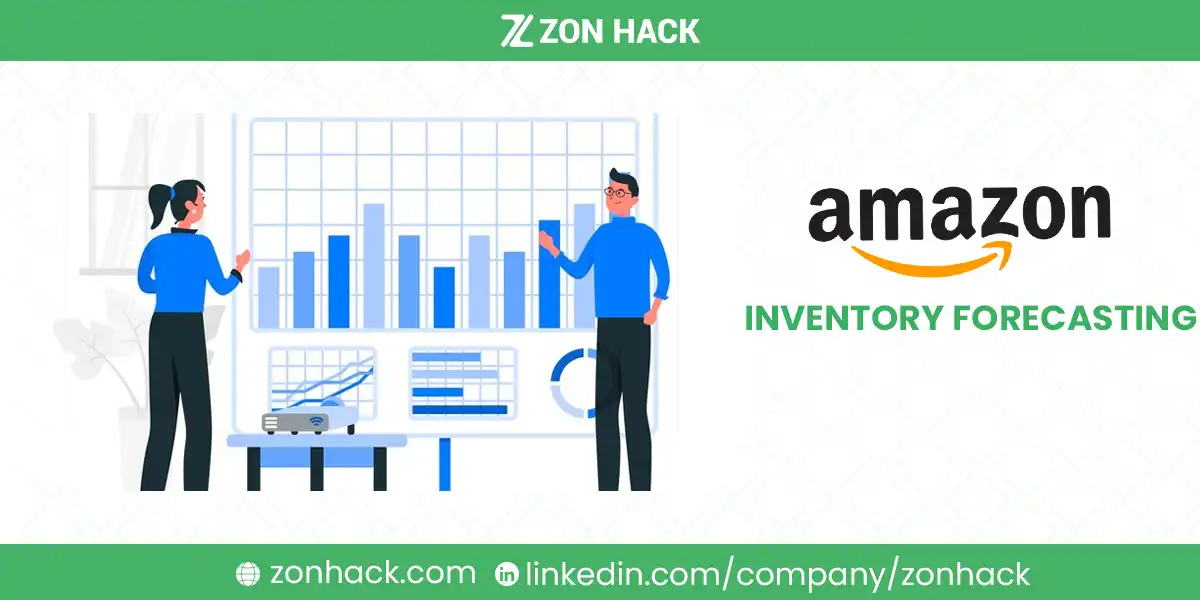Managing your Amazon inventory well can make or break your success as a seller. Accurate forecasting ensures you’re neither running out of stock nor drowning in unsold products, helping you stay competitive and profitable.
This article explains how to forecast inventory effectively using Amazon’s tools, third-party solutions, and industry best practices.
Why Accurate Inventory Forecasting Is Important
Being an Amazon seller comes with its challenges, and inventory forecasting is one of the most critical. Overstocking ties up capital and increases storage costs, while understocking leads to lost sales and reduced search rankings. For sellers, this balancing act impacts cash flow, customer satisfaction, and even their performance score.
Amazon’s algorithm values sellers who manage inventory efficiently. If you frequently run out of stock, your Inventory Performance Index (IPI) score takes a hit, and recovering lost search rankings can be a steep climb. Imagine running a sale, only to realize you underestimated demand and sold out before hitting your sales targets. Frustrating, isn’t it?

On the flip side, having too much inventory can be just as damaging. Products stuck in Amazon warehouses for months eat into your profits through long-term storage fees. Forecasting enables better resource allocation—letting you invest in areas like marketing or product development instead of wasting cash on idle stock.
And let’s not forget customer loyalty. Consistently meeting demand builds trust, increasing the chances of repeat business. With accurate forecasting, you’re not just managing products—you’re shaping your reputation.
Amazon’s Built-In Tools for Inventory Forecasting
Amazon has integrated a set of inventory management tools into Seller Central. These tools offer a window into your stock levels, potential restock needs, and sales projections. Here’s a closer look:
Restock Inventory Page
This feature helps sellers decide when and how much inventory to replenish. It estimates the time your current stock will last, along with recommended restock quantities and dates.
Inventory Planning Tool
This is like a health check for your inventory. It includes metrics like FBA Inventory Age, Excess Inventory, and Stranded Inventory, giving you a complete picture of what’s working and what’s not.
Inventory Performance Dashboard
If you want a quick overview, this is your go-to. It calculates your IPI score and highlights key metrics like sell-through rate and excess inventory percentage. A strong IPI score not only reflects efficient management but also determines how much inventory you can store at Amazon warehouses.
Demand Forecast Tool
Amazon’s latest Demand Forecast tool predicts sales for up to 40 weeks. It uses a probabilistic forecast model, analyzing past orders, deals, and seasonal trends. However, it has its limits—it’s primarily designed for high-velocity products, so newer or niche items might not display forecasts.
Third-Party Inventory Forecasting Solutions
For sellers who want more advanced features, third-party tools like Jungle Scout and SoStocked provide invaluable support. These platforms not only forecast demand but also integrate with marketing data, automating processes like reorder alerts and seasonal adjustments.
Jungle Scout, for example, is an all-in-one platform that includes inventory management as part of its suite. Meanwhile, SoStocked specializes in fine-tuning inventory efficiency by offering tools to handle complex supply chains. However, for a more customized and hands-on solution, you can consider custom inventory and forecasting management services like ZonHack.
Choosing the right tool often comes down to your specific needs. A small-scale seller might find Amazon’s built-in tools sufficient, while someone managing multiple SKUs across different markets may benefit from external software.
Advanced Forecasting Techniques
While tools and software are helpful, understanding the methodologies behind forecasting can sharpen your strategy. Techniques like time series analysis and machine learning models are increasingly popular. For example, time series analysis examines sales trends over specific intervals, identifying patterns like seasonality or growth spikes.
Machine learning takes it further by analyzing vast datasets, uncovering trends and anomalies that might escape human observation. Predictive models powered by AI can also adapt dynamically, learning from new data to refine accuracy over time.
But remember, no model is perfect. Pair these techniques with regular reviews and scenario planning to prepare for unexpected demand changes or supply chain disruptions.
Strategies for Successful Inventory Forecasting
Success in forecasting boils down to understanding your products and the market. Established items benefit from historical data, while new products require careful estimation based on competitor analysis and pre-launch marketing efforts.
It’s also crucial to adjust forecasts for external factors. Promotions, advertising campaigns, and market trends can all create unexpected demand spikes. Integrating this data into your forecasting models can save you from unpleasant surprises.
One often overlooked strategy is segmenting your inventory. Products with high sales velocity or profit margins require different management than slower-moving items. By categorizing and prioritizing your stock, you can avoid tying up capital in low-priority products.
Common Mistakes Sellers Make
Even experienced sellers fall into traps when forecasting inventory. Over-relying on Amazon’s recommendations without considering your own data can lead to costly errors. Ignoring seasonality or failing to account for product life cycles are other frequent missteps.
Stockouts, though obvious, remain one of the most damaging issues. Beyond lost sales, they can hurt your IPI score and leave a lasting dent in your search rankings. On the flip side, excess inventory is like having cash stuck in a drawer—it’s wasteful and unnecessary.
Other Frequent Queries
How do I forecast for seasonal products?
Use historical sales data for similar time periods, and adjust based on trends like holidays or major shopping events.
What’s the best tool for a beginner?
Start with Amazon’s built-in tools like the Inventory Planning Tool. They’re free and user-friendly.
Can promotions disrupt forecasts?
Absolutely. Integrate marketing data into your models to anticipate demand spikes caused by promotions or ad campaigns.
How often should I update forecasts?
Review them at least monthly, or more frequently during peak seasons or major marketing pushes.
Final Words
Managing inventory isn’t just about keeping products in stock—it’s about understanding your market, staying ahead of demand, and using the best tools available. With the right forecasting strategies, you can boost profitability, satisfy customers, and build a reputation that keeps them coming back.




